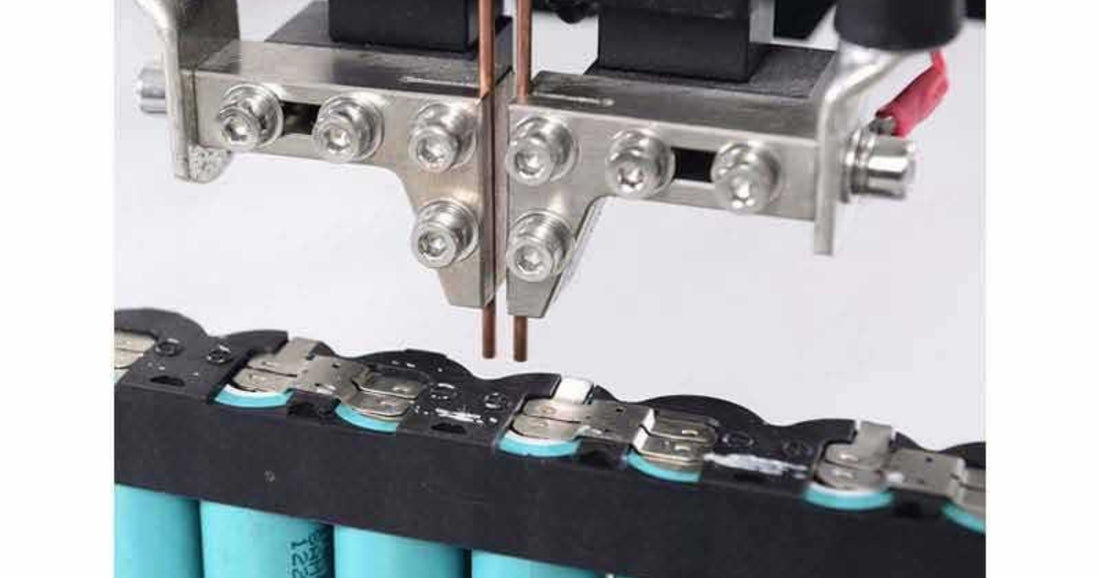Generally, we do not recommend non-professionals to solder lithium batteries. The reason is very simple, the surface metal of most lithium batteries is an inert metal, and it is more difficult to weld on this metal surface. If you really need to do simple soldering, use a file to treat the soldering part of the lithium batteries first to make the surface rougher, and then apply rosin flux and use a high-power soldering iron to quickly complete the soldering action. Be careful not to touch the electrodes for a long time with the soldering iron, which not only can solder quickly, but also reduce the damage to the cell caused by high temperature.
Non-Solderable Lithium Batteries:
Prismatic Lithium Cells without nickel treatment
The tabs of the prismatic lithium cells are generally made of aluminum and copper, which is difficult to solder directly on. This kind of cell is generally connected with the aluminum bar by laser welding and assembled into a battery pack.

Cylindrical cells
Usually, both ends of the 18650 battery shell are made of galvanized metal, which is called stainless steel as well. It is difficult to tin it with a soldering iron. Soldering should be prohibited for two reasons:
- The temperature of the soldering iron needs to be about 300 ℃ to melt tin. And if the soldering iron at this temperature directly touches the surface of the steel shell of the cell, the heat will be transmitted to the inside of the cell through the thin steel shell. When the soldering time is too long and the internal temperature of the cell reaches above 120°C, the electrolyte will be damaged, and the high temperature will easily cause the diaphragm shrinkage. At this time, the materials of the positive and negative electrodes of the cell will be contacted directly, and a short circuit will be found inside the cell. A slight internal short circuit of the cell will increase the self-consumption power and reduce cycle times while a serious internal short circuit will cause the cell to explode and catch fire, which is particularly harmful.
- The surface of the cell is generally coated with a layer of anti-rust oil, if the soldering is directly performed on the surface of the cell, it will destroy the layer of anti-rust oil, and the cell tends to rust, affecting the lifetime of the cell.
The assembly of the cylindrical cell requires the use of a resistance spot welding machine. Spot welding a layer of nickel tape first, and then soldering tin on the nickel tape. Because the welding speed of the resistance spot welding machine is very fast, the heat will not be transferred to the inside of the cell.

Solderable Lithium Batteries:
Polymer Pouch cells
Generally, the material of the positive electrode tab of the pouch cell is nickel-plated aluminum, and the negative electrode tab is copper, both of which can be soldered. And their positive and negative electrode tabs are relatively long, so the temperature during soldering will not affect the inside of the cell.


